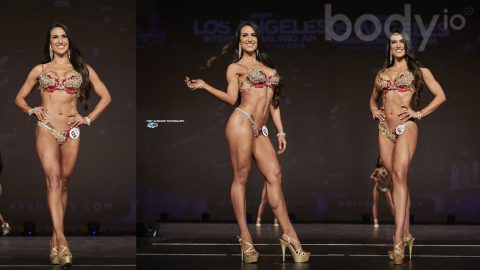When your ab training goes wrong, or you’re not getting any results, it’s not because you’re doing the wrong exercises. It’s not about volume, intensity, or rest periods, either. The reason your abs aren’t coming in the way they should—other than your shitty diet, of course—has nothing to do with anything you’re thinking, so relax. I’m about to tell you how shit works.
Instead of worrying so much about what exercises you’re doing in the gym, and how many sets and reps you’re banging out with all of them, it’s time to start thinking more about stimulating your muscles, because that’s the part of this whole picture you’ve been neglecting. Too many people simply dive on the floor with a number in their head, blowing through set after set of half-assed crunches, thinking they’ve worked their abs properly because they’ve made it through some predetermined rep count—without paying attention to how they’re actually moving.
That sort of thinking won’t do shit for you. To stimulate your abs the right way, you need to stretch them, then squeeze them. Squeeze the muscle, then let it relax. Squeeze and relax, emphasizing the squeeze, and learning how to breathe properly—taking air in when you come up, and letting it out as you go back down.
When you’re done with a workout where you’ve stimulated your abs effectively, you should feel like someone’s been punching you in the stomach. If you’re not consistently creating this feeling with your ab training, you might get some development, but it’ll be of the Justin Bieber or Usher variety—little baby abs, instead of the ice cubes you want.
Forget About Volume
Muscle stimulation is a highly individual thing. Especially with ab training, I’m not going to prescribe specific numbers for any exercise, because people adapt in wildly divergent ways, ending up with a dizzying variety of results. The idea here is to use some common sense and come to the realization, once and for all, that less is more. If you don’t know what you’re doing, too much ab training volume will hurt more than it’ll help—especially if you end up with a sports hernia as a result.
Feel your way through your workouts. When you’re done, you’re done. You don’t need to keep doing ab work until you’ve caught a cramp and you’re locked in the fetal position, screaming bloody murder.
There’s no magic number in terms of the number of reps within each set, either. For some people, five sets of ten will work just fine. Others respond far better with four or five sets of 25 or more. Train instinctively and use some common sense with this. And don’t train to failure.
Your Obliques
You won’t see any direct oblique work here, and that’s a bit of a personal bias on my part. I’ve never done any direct work on my love handles. You get plenty of stimulus in this area from deadlifting, and doing too much for my obliques would always give me a bigger waist than I wanted. Any oblique development I needed came solely from my deadlift training. This obviously doesn’t apply to everyone, and you can do some oblique work if you really feel it’s necessary—but for now, I’d suggest letting deadlifting work its magic on its own.
When To Train Your Abs
I’ve been lucky. During my competitive bodybuilding career, I came to realize that, thanks to some good genetics, I didn’t need to train my abs as often as some other guys did. In fact, I’d typically only start working them three times per week when I was about six weeks out from a competition. This made stimulation and visualization very important for me, because I needed to pay close attention to the areas I needed to fill in. I suggest you do the same. Ask yourself what you need. Do you need work on your center? Your upper abs? Your lower abs? Everything?
For intermediates, I advocate training abs two or three times per week (alternating their position within your workouts, since I’m a believer in muscle confusion, which I’ll address in a moment), on days where you’re training smaller muscles like your shoulders. I also don’t like training abs on leg days—especially if you’re doing heavy squats. There are two reasons for this.
1. When you squat, you’re already giving your abs a very strenuous workout. On these days, you don’t really need to do any more than this in order to stimulate your muscles.
2. When you combine your abs with your shoulder or hamstring training, you’re working opposing muscles. This will keep you from staying “crunched” through your entire session—which is what tends to happen when you work everything on the same side.
Getting Started
Before you start your worksets, you’ll want to open up your muscles to allow them to move with a full range of motion. The idea here is to stretch out your abdominal wall before you actually engage. When all you’re doing in a workout is crunching, without creating a stretch in the other direction and keeping a curve in your back, your muscles will lock up, pull you forward, and cause lower back problems.
We can combat this with back bridges, the first move you’ll do before you start any actual ab work. Lie down on your back, with your knees bent, and bring your belly up toward the ceiling, feeling a stretch in your abdominal wall. If you have trouble bridging, use a foam roller. Put the roller under your lower back, arch, and roll yourself out.
The Exercises
BASIC FLOOR CRUNCH: You already know how to do this one. Lie on your back, with your knees bent and your feet flat on the floor. Cross your arms across your chest and crunch, squeezing your abs at the top, breathing in when you come up, and breathing out when you come down.
Notice that I’m advocating crossing your arms across your chest here. If you want to put your hands behind your neck, make sure it’s the lower part of your neck, and not your head. When you begin to fatigue, you’ll pull even harder on your head, and this forward flexion can easily lead to injury.
HANGING KNEE-UPS ON PULL-UP BAR: If you have some experience with this move, you know hanging ab work primarily stimulates your lower abs. With this exercise, you have some options:
1. Do them weighted. Hold a dumbbell between your feet, with your toes pointed forward, and perform your knee-ups with more resistance.
2. Do them on a bench. Sit on the bench, lean back, and bring your knees up to your stomach. These can also be done holding a dumbbell between your feet—again, with your toes pointed forward.
The Workout
You’re going to alternate these two exercises throughout this workout for sets of 25 reps or more, so this, essentially, is a superset—albeit one with a bit of rest between sets. I’m a big advocate of muscle confusion here, because that’s the way we use our abs in everyday life. You don’t just perform the same movements over and over again. Instead, you’re always doing something different, so by supersetting different moves, your development will be better balanced.
For your rest periods, take a maximum of 30 seconds between sets. Again, there’s no magic bullet here, but you also don’t need to sit around doing nothing for minutes at a time. Start with 30 seconds as your baseline, then adjust from there.
Workout Chart
Do as many rounds of the following circuit as you can, without training to failure. Try for 25 reps with each exercise, making sure to squeeze, relax, and breathe in order to properly stimulate your entire ab region. Once you master this progression, we’ll take you through a more advanced series of moves with the full X-Frame Protocols release.
1. BASIC FLOOR CRUNCH: 25 reps
2. HANGING KNEE-UPS ON PULL-UP BAR: 25 reps












